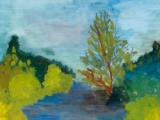| The project/Projekt Themes/Teme
The place we live
This is our nature
This is our culture
Sustainable development
Tools/Orodja
Curiosities/Zanimivosti
minister Kopač
art winners
Students/učenci
Teachers/Učitelji
Eno
song/Eno pesem
 back back
|
 Paper Paper  About paper,
cardboard and pasteboard About paper,
cardboard and pasteboard
Raw materials for paper making
Where does paper come from?
Ekcology
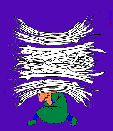 |
We need and use paper every
day. We know many sorts of it, and we use it for almost everything. It can be smooth or
rough, transparent or thick, absorbent as a towel, handkerchief or a baby napkin. It can
be a filter for tea or a small pot for yoghurt or milk. We pay with money which is made of
paper; in short, paper is everywhere around us. |
| About paper,
cardboard and pasteboard |
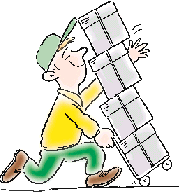
Mono-layered paper weight up to 150 g/m2.The cardboard
weights from 150 to 500 g/m2.
The pasteboard weights more than 350 g/m2. |
Taking in
consideration all sorts of materials, which different kinds of useful products are made
of, paper is most frequently used material. Chinese invented paper about 2000 years ago.
Up to now, paper has been used for printed books, newspapers, documents, notebooks, for
packaging, wrapping things, for making paper-made objects and stuff like that. The secret
of making paper was brought from the east more than a thousand years ago. The first
Slovenian paper-factory was established in the 16th century in Fužine,
Ljubljana. How do we distinguish paper, cardboard and pasteboard?
They can be distinguished by four simple characteristics: thickness, layers, weight
and quality. We estimate thickness by appearance and type. Cardboard is thicker than paper
and thinner than pasteboard. We verify the layers by putting a piece of paper, cardboard
and so on into water. The glue between the layers melts thus showing us all the connected
layers.
Paper is thin with only one layer. Cardboard is thicker with one - two or even
three layers. Pasteboard is about five mm thick with many layers. |
| Raw materials for paper making |

wood
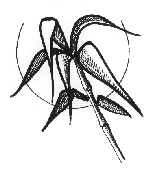
bamboo
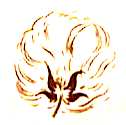
cotton
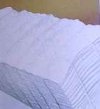
rags

glue

|
Natural fibber substances are the basic raw material for
making paper. For centuries in the past people used only cotton, hump and flax fibbers to
make paper. The usage of these materials today is lower, because there are some better and
more resistant fibbers available. The factories have replaced old fibres with the fibbers
of fir, spruce and poplar wood. When you tear a piece of paper, you can see tiny treads
- these are the wood fibres! Once they made paper also from rags in the so called
"paper mills". Paper for book and newspaper printing comes from paper factories
coiled in rolls. Modern paper-machines are few meters wide, that's why paper is cut on
narrow rolls during rolling-up. Notebook, office paper, cardboard and pasteboard paper
comes to the market cut into smaller sheets. We say that our format is standardised. The
standard size for A0 measures 1189 x 841 mm. We get smaller formats by dividing the longer
side of the bigger format.
Mono-layered paper weight up to 150 g/m2.
The cardboard weights from 150 to 500 g/m2.
The pasteboard weights more than 350 g/m2.
What can we also use paper for?
Products for presents, home and play
We can make many gifts or useful objects for home and toys from paper
ourseleves. Like: mascots, racks for pens, movable figures - clown, frog, etc.
We make paper products with special tools:
- tools for drawing and measuring: pencil HB, wooden or plastic ruler, a metal ruler and a
triangle (450, 300).
- handling or working tools: scissors, pasteboard knife, ticket puncher, hammer and a
smoothing plane.
|

|
|
